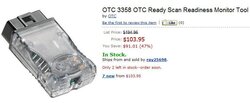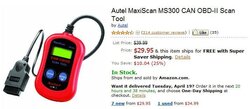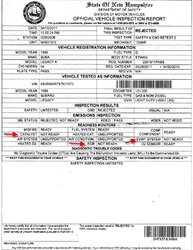Hello
My Check Engine Light (CEL) was on in the 1999 Subaru Legacy 4cyl Eng for sometime. I finally dumped the code P0440 and fixed a vacuum leak on top of the engine to fix the EVAP System problem! I thought that was the hard part. LOL
I went to get a sticker 2 times and both times it failed and the printout said "Not Ready" for the emission system monitors!
I now know that my Toyota has 5 emission system monitors such as EVAP System, EGR System, Catalytic Converter... ETC.
Toyota Service Bulletin "TSB - EG003-02 Readiness Monitor Drive Patterns" contains a info for all Toyotas from 1996 - 2002.
There are charts for each model and engine that show which of the 11 different monitors for emissions that your car has.
My 1999 Toyota Solara has 5 of 11 and on the rest of the pages it describes how to drive the car to reset each monitor. When they are all reset then the computer will be "Ready" and emissions can be tested and pass so an inspection sticker can be issued!
Therefore, When each of the 5 monitors in the cars computer have their Drive patterns combined into a Drive Cycle then a person can perform the drive cycle and reset all the monitors!! It is just this simple !! LOL
So my question is?
What is the drive cycle for a 1999 Subaru Legacy 4 cyl 2.2L?
Or
Does anyone have this Subaru TSB - Technical Service Bulletin??
AUGUST 2004 Emissions - OBD Readiness Test Procedure
I think it has the Drive Patterns for the Computer Monitors in there for a few model years.
My Check Engine Light (CEL) was on in the 1999 Subaru Legacy 4cyl Eng for sometime. I finally dumped the code P0440 and fixed a vacuum leak on top of the engine to fix the EVAP System problem! I thought that was the hard part. LOL
I went to get a sticker 2 times and both times it failed and the printout said "Not Ready" for the emission system monitors!
I now know that my Toyota has 5 emission system monitors such as EVAP System, EGR System, Catalytic Converter... ETC.
Toyota Service Bulletin "TSB - EG003-02 Readiness Monitor Drive Patterns" contains a info for all Toyotas from 1996 - 2002.
There are charts for each model and engine that show which of the 11 different monitors for emissions that your car has.
My 1999 Toyota Solara has 5 of 11 and on the rest of the pages it describes how to drive the car to reset each monitor. When they are all reset then the computer will be "Ready" and emissions can be tested and pass so an inspection sticker can be issued!
Therefore, When each of the 5 monitors in the cars computer have their Drive patterns combined into a Drive Cycle then a person can perform the drive cycle and reset all the monitors!! It is just this simple !! LOL
So my question is?
What is the drive cycle for a 1999 Subaru Legacy 4 cyl 2.2L?
Or
Does anyone have this Subaru TSB - Technical Service Bulletin??
AUGUST 2004 Emissions - OBD Readiness Test Procedure
I think it has the Drive Patterns for the Computer Monitors in there for a few model years.







